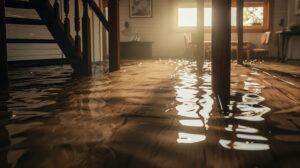No matter how often overlooked, basements form an integral part of the house in most homes. Apart from providing extra living spaces for guests, storage space and utility areas, basements play a key role in maintaining the structural integrity of your house.
However, basements can sometimes be a source of stress when there is the issue of water and moisture down there. How can you tell there is water issues in your undercroft? A moisture tester can confirm water problems in the vault. It can also be noticed when the air feels musty, damp and the sight of mold, mildew and wood rot.
Mold and mildew can negatively affect the health of your family since it is the cause of most allergies and some respiratory issues. That said, this article gives ideas on how you can waterproof your basement and prevent the above risks from happening.

Does your basement get water coming in?
Injections and Fillings
When basement walls and floors expand during hot weather and contract in cold weather, cracks may form in some very old houses. These cracks form the entry points for water seepage from the ground or the exterior walls. Since replacement of the entire walls or floor may not always be an option, the cracks are filled with epoxy. This material becomes hard as it cools off inside the cracks, something that prevents water from seeping through. The main benefit of this method of dealing with water issues is that it does not interfere with the structural integrity of your house. The downside is that it is not designed to address the root cause of the problem. It is also cost effective especially when working under a budget.
French Drains
Did you know that the runoff water that collects in your yard could end up in your basement? This can happen when the foundation soil is loose and the water seeps through. To deal with this problem, a trench, known as a French drain is constructed in the yard. An excavator is used to dig the trench at an inclined angle to direct runoff water away from the foundation of your house. A filtration material is then spread in the trench and the washed gravel is added to it. This is the best method of ensuring your vault is water-resistant since the drain can serve you for decades. The only drawback with this method is that it interferes with your lush landscape. On the bright side, the drains are a permanent solution since the drain can serve you for decades.
Exterior Water Resistant
Sometimes water problems in your undercroft could be because of an improper gutter system that directs water to your foundation. As you do that, ensure that your roof waterspouts do not direct rainwater to the basement foundation. Vegetation growing around the foundation can also contribute to water problems inside the vault.
Applying Sealants
In some very old houses, paint on the exterior basement walls may be worn out. When this happens,
you may find that the wood is soaked with moisture, especially during the rainy season. To deal with this menace, you should have the walls repainted with a water-resistant coating like epoxy. Before applying a fresh coat of paint or epoxy, scrap off the old paint completely so that the new coating sticks well. The good thing with this method is that you can make it as a DIY just as you do with any other painting job.
Interior Drainage System
Leaking pipes, loose basement soil, and broken utilities can also present you with water problems. When that happens, you only have one choice, to deal with the problem from the interior. The interior drainage system is simply a drain leading to a pit where all the vault water collects. The drain is dug at an inclined angle and leads to a pit also dug at the lowest point on the floor. When water collected at the pit reaches a certain level, it is sucked up by a sump pump and is directed outside. This method is your best choice if you do not want the integrity of your landscape interfered with.
Each of the methods of water resistance discussed above comes with its advantages and disadvantages. In addition, they all depend on the source of the water problem. What that means is that they call for a thorough assessment before you settle on a particular method. Some of them deal with the problem entirely whereas some only provide temporary solutions. Another important aspect to consider is the cost and the effect they have on your landscape.



